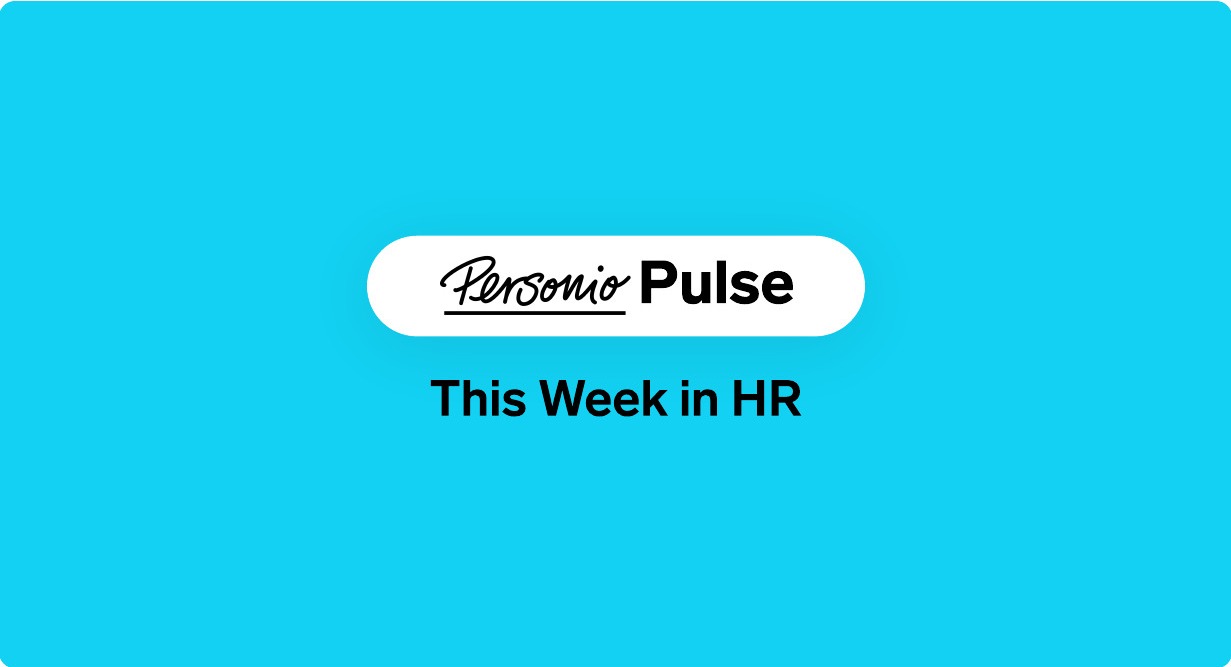
Our weekly HR newsletter
Stay ahead with the latest in HR, delivered straight to your inbox.
Subscribe here28. May 2024
Why is everyone talking about… 'app sprawl'?

Welcome to Personio Pulse: This Week in HR, where each week we take a look at the latest trends in the world of work, what you need to know about them and what they mean for you as an HR professional.
This week we’re covering the emerging term ‘app sprawl,’ what it means for HR teams and where organisations should place their focus when it comes to the tools they use.
What you need to know
How many tools is your business using on a daily basis? According to research from the Harvard Business Review, the average knowledge worker is using upwards of 30 apps every single day. This is leading to ‘context switching’ (going from one app to another) close to 3,000 times daily.
What has resulted is a phenomenon called ‘app sprawl.’ This refers to when an organisation introduces a host of different tools in the hopes of boosting productivity. This can inadvertently lead to reductions in productivity due to the sheer overwhelm of having to switch between disconnected tools.
App sprawl is dangerous because it can quietly sneak up on an organisation. It can lead to dwindling productivity that can be hard to notice, as well as negative changes in employee experience that can truly hurt an organisation.
What others are saying about it
In conversation with publication WorkLife, Andy Boyd, Chief Product Officer at Appfire, lays out why app sprawl is a threat: “In some situations, there is almost too much information available to employees and they end up spending more time searching for information across multiple platforms versus having one or two sources of truth that they can trust will hold the most updated information for their job function.”
By some estimations, app sprawl may be inevitable. It’s true that organisations need these tools to do and grow their business, but they may need to take a more critical eye going forward.
James Metcalf, Chief Administrative Officer at Semantic Arts, offers a new place to begin: “By starting with a single, extensible model of the enterprise (including its HR functions), leadership can get a good look into what the key systems and processes are. By only buying/building apps that can feed back to that core model and drive core business processes, app sprawl is heavily limited.”
What that means for you
In our recently-revamped guide, the Cost of Doing Nothing, we explain how disconnected tools can cost organisations upwards of three days of revenue, per employee. To tackle app sprawl, we’d recommend the following:
Take stock of your tools: Your teams may need to begin by auditing the tools you’re using and the value they are bringing. Assess which ones are pulling their weight — and which ones are not.
Trust a single source of truth: The real risk of app sprawl is when your data is spread across a multitude of systems. To counteract, consider investing in a single, secure source for your employee data.
Deeply integrate with other tools: To reduce the risk of context switching, you need to ensure that your tools are integrated with one another in meaningful ways. For example, Personio connects to over 200 of other workplace apps.
In a lot of ways, app sprawl is inevitable. But it can be manageable! If you have a centralised source of truth , as well as the right integrations, you can reduce context switching and increase productivity across your organisation.
What else should I read?
That's all for this week's edition of Personio Pulse: This Week in HR. Check back next week as we continue to dissect the latest trends impacting the ways we work.
Want more from Personio?
Visit our HR Knowledge Hub | Book a free demo | Start your free trial
🎧 Our HR podcast, Tomorrow’s People 🎧
Hear about the hottest HR topics and how to improve how we work. Listen here.

Max Specht
Max Specht is a Workplace Trends Expert at Personio. He enjoys writing and discussing topics related to employee engagement, leadership development, HR technologies and how teams can respond to the latest trends.
